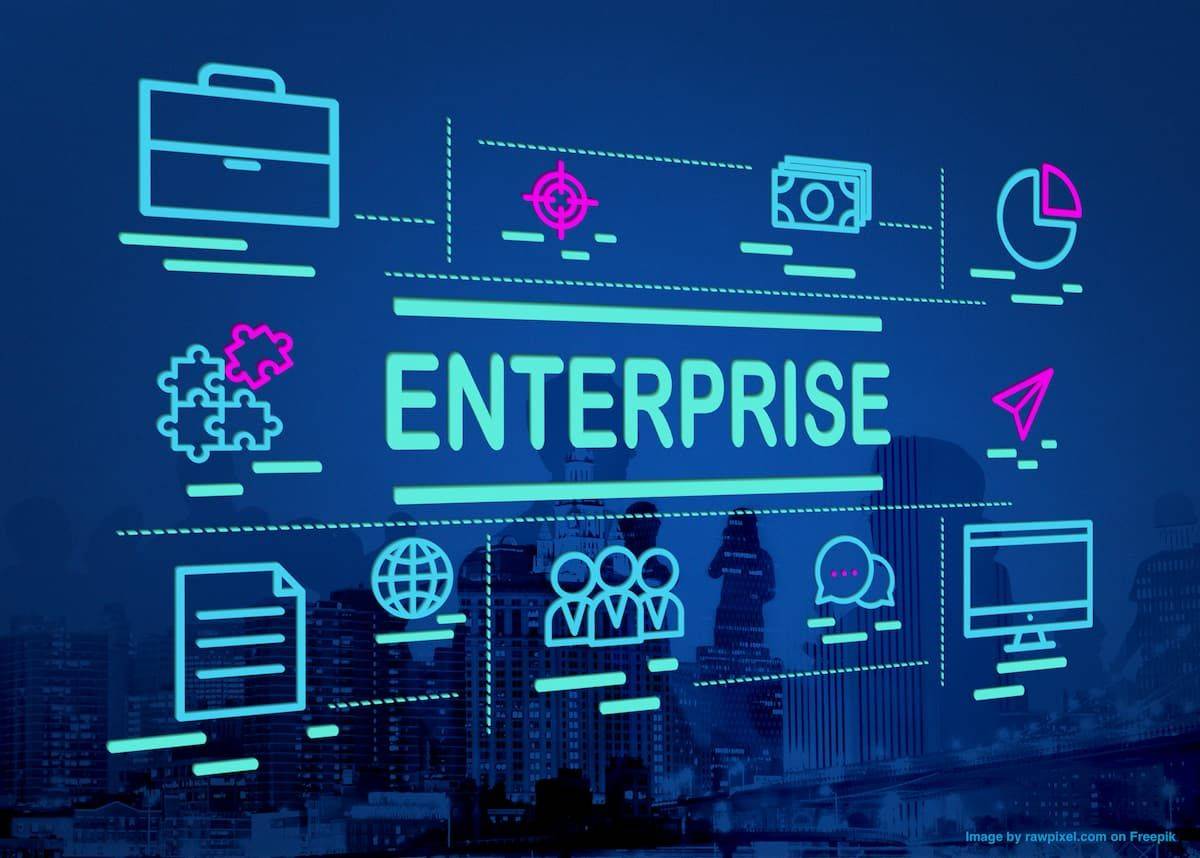ENTERPRISE SOFTWARE SOLUTIONS: AN
IN-DEPTH GUIDE
Introduction
Enterprise software solutions are
comprehensive applications designed to meet the needs of large organizations
and businesses. These solutions are typically used to manage and streamline
complex business processes, improve efficiency, enhance collaboration, and
support decision-making across various departments. Unlike consumer software,
enterprise software is customized for the unique needs of an enterprise,
offering scalability, integration, and flexibility to support a wide range of
business functions.
Enterprise software can cover a vast array of
processes, from customer relationship management (CRM) and enterprise resource
planning (ERP) to human resources (HR), supply chain management (SCM), and
business intelligence (BI). As businesses grow and scale, the use of advanced
software solutions becomes essential in managing their operations efficiently.
Key Types of Enterprise Software Solutions
Enterprise Resource Planning (ERP)
Overview: ERP systems integrate various
business processes into a single unified system. They provide a comprehensive
solution that can manage everything from financials and supply chain to
inventory, procurement, and human resources.
Key Features:
Centralized database: All data is stored in
one place, making it accessible across departments.
Automation: Routine tasks such as invoicing,
payroll, and inventory tracking can be automated to reduce manual labor.
Scalability: ERP systems can grow with the
organization, adding new modules and features as needed.
Popular Providers:
SAP
Oracle ERP Cloud
Microsoft Dynamics 365
Use Cases:
Financial management and accounting
Inventory and supply chain management
Human resources and payroll management
Customer Relationship Management (CRM)
Overview: CRM systems help businesses manage
interactions with customers and potential customers. These systems store
detailed information on customer interactions, sales, and support history,
providing insights into customer needs and behaviors.
Key Features:
Customer data management: CRMs track customer
information, including contact details, preferences, and purchase history.
Sales automation: Tools for managing leads,
sales pipelines, and opportunities, helping sales teams to close deals faster.
Customer support: Helpdesk tools, ticketing
systems, and knowledge bases enhance customer service and satisfaction.
Popular Providers:
Salesforce
HubSpot CRM
Zoho CRM
Use Cases:
Managing customer inquiries and complaints
Sales tracking and lead generation
Marketing campaign management
Human Resource Management Software (HRMS)
Overview: HRMS solutions are designed to
manage employee-related processes within an organization, from hiring and
onboarding to payroll and performance management. These systems
streamline HR workflows and enhance employee
engagement.
Key Features:
Employee data management: HRMS systems store
and manage employee records, including personal details, employment history,
and performance reviews.
Payroll and benefits administration: Automated
payroll processing and employee benefits management.
Recruitment: Tools for posting job openings,
tracking candidates, and onboarding new employees.
Popular Providers:
Workday
BambooHR
ADP Workforce Now
Use Cases:
Employee payroll and benefits management
Recruitment and onboarding
Performance appraisal and training
Supply Chain Management (SCM)
Overview: SCM software is designed to help
businesses optimize their supply chain operations. From procurement and
inventory management to logistics and supplier relationships, SCM systems
ensure that products are delivered efficiently and cost-effectively.
Key Features:
Inventory management: Real-time tracking of
stock levels and automated reordering based on demand.
Supplier relationship management: Tools for
managing relationships with suppliers, including performance evaluation and
contract management.
Demand forecasting: Predicts future demand
using historical data and trends, helping businesses optimize inventory and
procurement.
Popular Providers:
SAP SCM
Oracle SCM Cloud
Microsoft Dynamics 365 Supply Chain
Management
Use Cases:
Inventory tracking and optimization
Supplier management and procurement
Logistics and shipment tracking
Business Intelligence (BI) and Analytics
Software
Overview: BI software helps businesses
collect, analyze, and interpret large amounts of data to make informed
decisions. It enables organizations to transform raw data into actionable
insights, offering reports, dashboards, and predictive analytics to support
decision-making.
Key Features:
Data visualization: Tools for creating
graphs, charts, and dashboards that make complex data easy to understand.
Reporting: Automated reporting capabilities
that provide real-time insights into key performance indicators (KPIs).
Predictive analytics: Uses machine learning
algorithms to forecast future trends based on historical data.
Popular Providers:
Tableau
Microsoft Power BI
Qlik
Use Cases:
Financial reporting and analysis
Market and customer analysis
Predictive sales forecasting
Project Management Software
Overview: Project management software is
designed to help teams plan, execute, and monitor projects. These solutions
provide tools for collaboration, task management, scheduling, and resource
allocation, ensuring that projects are completed on time and within budget.
Key Features:
Task tracking: Assign, track, and manage
tasks to ensure deadlines are met.
Collaboration tools: File sharing, messaging,
and commenting systems to facilitate team collaboration.
Gantt charts and timelines: Visual tools for
project scheduling and resource management.
Popular Providers:
Asana
Trello
Monday.com
Use Cases:
Team collaboration and communication
Project timeline and deadline tracking
Resource allocation and management
Enterprise Content Management (ECM)
Overview: ECM solutions help businesses
manage, store, and share documents and other content within an organization. These
systems ensure that content is easily searchable, accessible, and secure,
supporting compliance and collaboration.
Key Features:
Document storage and retrieval: Centralized
repositories for storing and retrieving business documents.
Collaboration tools: Version control,
document sharing, and workflow automation to improve teamwork.
Compliance and security: Tools for ensuring
compliance with industry regulations and protecting sensitive information.
Popular Providers:
Microsoft SharePoint
OpenText
Alfresco
Use Cases:
Document management and collaboration
Compliance management
Workflow automation
Key Benefits of Enterprise Software Solutions
Enhanced Efficiency and Productivity
Enterprise software solutions automate
routine business processes, reducing manual labor and human error. This leads
to more efficient workflows, improved accuracy, and faster decision-making.
Scalability
As organizations grow, enterprise software
can scale with them. Businesses can expand their operations and add new
functionalities or users to the system without the need for significant
overhauls or costly infrastructure upgrades.
Improved Collaboration
Many enterprise software solutions come with
collaboration features, allowing employees to communicate, share documents, and
work together in real-time, regardless of their physical location.
Data-Driven Decision Making
Enterprise software solutions, particularly
BI and analytics platforms, provide valuable insights by collecting and
analyzing data from various sources. This helps businesses make informed
decisions, optimize performance, and identify new opportunities.
Cost Savings
While the initial investment in enterprise
software can be significant, the long-term cost savings from improved
efficiency, automation, and reduced errors often outweigh the expenses.
Additionally, cloud-based solutions offer flexible pricing models that can
reduce upfront costs.
Challenges of Implementing Enterprise
Software Solutions
High Initial Costs
The upfront investment in enterprise
software, especially if it’s a customized solution, can be substantial. Many
businesses may struggle with the cost, which can involve licensing fees,
hardware, training, and implementation.
Integration with Existing Systems
Integrating new enterprise software with
existing systems can be complex and time-consuming. Ensuring that different
software platforms work together seamlessly can be a challenge, especially if
the organization uses outdated technology.
User Adoption and Training
Employees may resist adopting new software,
especially if they are accustomed to older systems or manual processes.
Comprehensive training and clear communication about the benefits of the new
system are essential for successful implementation.
Security Concerns
Enterprise software solutions often deal with
sensitive business data, and security must be a top priority. Ensuring data
privacy, compliance with regulations, and protection from cyber threats are
critical factors that businesses must address.
Future Trends in Enterprise Software
Solutions
Cloud-Based Solutions
Cloud computing continues to be a dominant
trend in enterprise software. Cloud-based systems offer flexibility,
scalability, and cost savings, allowing organizations to access their software
and data from anywhere, at any time.
Artificial Intelligence (AI) and Machine
Learning (ML)
AI and ML technologies are being integrated
into enterprise software to automate decision-making, predict trends, and
improve customer experiences. These technologies are particularly useful in
areas like business analytics, CRM, and ERP.
Blockchain Technology
Blockchain is starting to be used in
enterprise software solutions to provide greater transparency, security, and
efficiency, particularly in supply chain management and contract management.
Mobile Accessibility
As remote work and mobile business operations
increase, enterprise software solutions are increasingly offering
mobile-friendly versions that allow users to access business-critical
applications from their smartphones and tablets.
Conclusion
Enterprise software solutions are essential
for modern organizations looking to optimize their operations and stay
competitive. By automating processes, improving collaboration, and providing
valuable insights, these software solutions help businesses to make better
decisions, increase productivity


